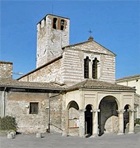
This chapel to the left of the facade is sometimes said to be the the oldest part of the church, dating the 7th or 8th century. However, according to Paola Guerrini and Francesca Latini (referenced below, at pp. 299-300, entry 77) its walls date to ca. 1100 and are not markedly different from the oldest walls of the main part of the church.
It is in the form of a rectangle, oriented at 90° to the main body of the church church.

The inscription above the entrance, which was placed here in 1855, claims that:
-
✴SS Peter and Paul received hospitality and celebrated the sacred mysteries in this suburban temple; and
-
✴that St Crispolitus, a disciple of St Peter and the first bishop of Foligno and Bettona, consecrated what had been a temple to Diana as a church dedicated to the Virgin in 58 AD.
Exterior
The small monofore window in the left wall, which is visible in the photograph above, is original.

Interior
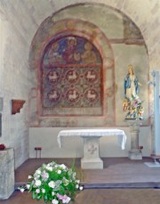
The original barrel vault of the chapel survives.
Frescoes of the Altar Wall (12th century)
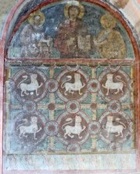
Frescoes in the Bifore Window (12th century)
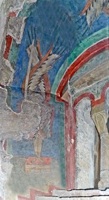
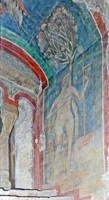
These frescoes on the right, to the sides of the bifore window nearest the altar, depict:
-
✴a Seraph (badly damaged), on the left; and
-
✴a figure identified by inscription as “Dimas latro” (the good thief), on the right.
Frescoes in the niche in the left wall (date?)
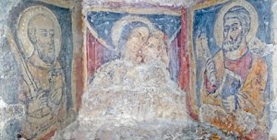
These frescoes in this niche depict the Madonna and Child with SS Peter (on the right) and Paul.
Art from the Chapel
Madonna and Child Enthroned (early 13th century)
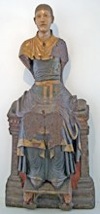
Read more:
P. Guerrini and F. Latini, “Foligno: Dal Municipium Romano alla Civitas Medievale: Archeologia e Storia di una Città Umbra”, (2012) Spoleto
Return to the main page on Santa Maria Infraportas.



